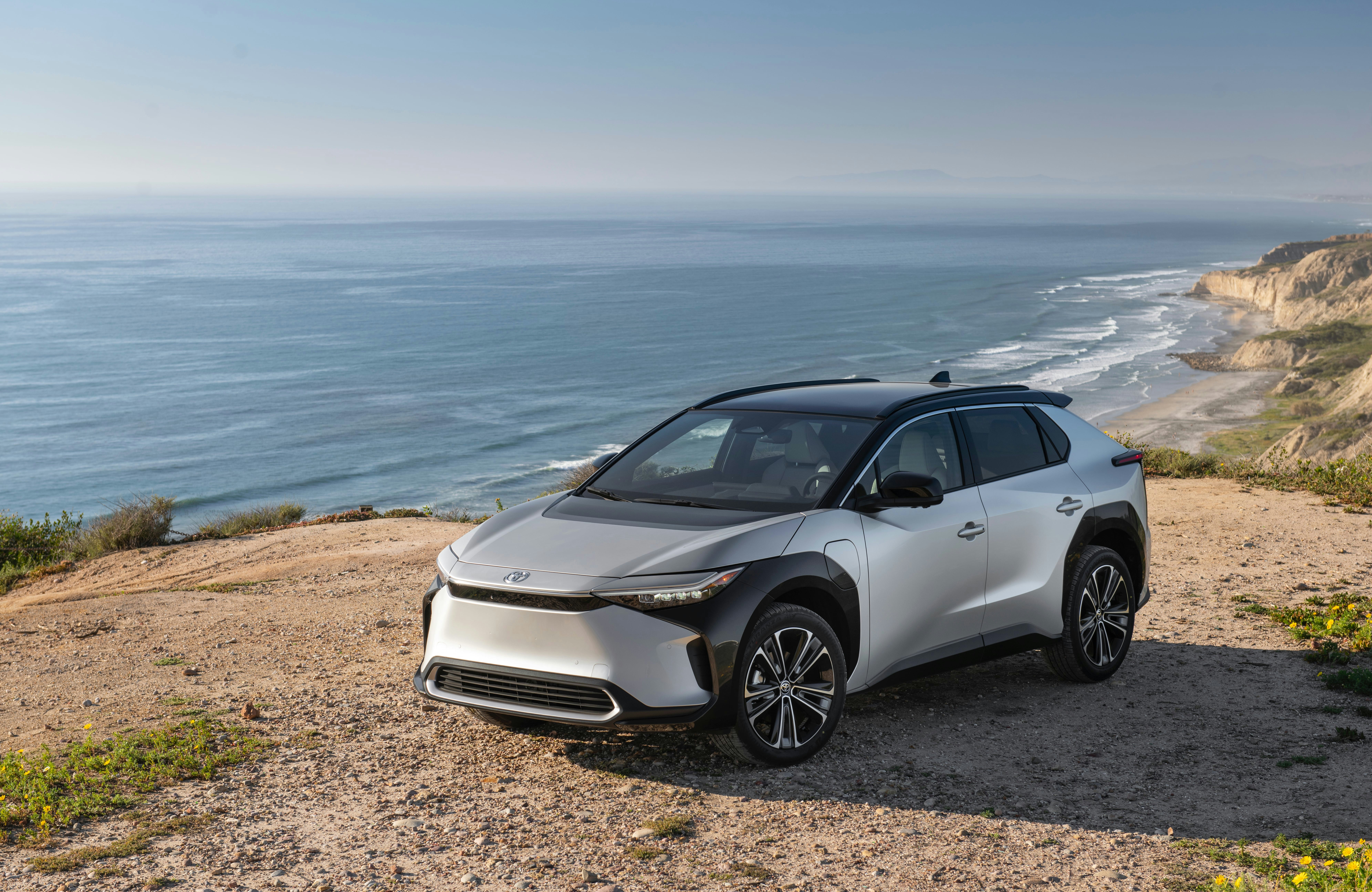
It seems common wisdom in the EV community that Toyota is somehow late to electric cars.
Tesla, it's correctly noted, has been beating the pants off everyone when it comes to electric cars, and those old, slow, legacy carmakers better get to it, or they're going to be left behind in the great electric-vehicle conversion.
And Toyota, long fascinated with hybrids and hydrogen, has studiously avoided selling any EVs (aside from some all-electric RAV4 SUVs in California) as best it could. Those skeptical enthusiasts think Toyota's new, strangely named bZ4X electric crossover is too little too late.
I suspect "they" are wrong. Toyota knows that the conversion to electric will be a gradual one and that slow and steady wins the race. Tesla certainly jumped out to a hare-esque lead in the EV race, but don't count the Toyota-tortoise out.
Toyota has been selling electrified cars for more than 20 years, with the hybrid Priusthe best-known. These days, it's hard to find a Toyota that doesn't have a hybrid powertrain as an option, including the new Tundra pickup truck. There are the plug-in hybrid twins Prius Prime and RAV4 Prime, and now we have the fully-electric and terribly-named Toyota bZ4X.
Toyota has a host of terrific names — Camry, Corolla, RAV4, Highlander — but instead, the folks in the marketing department reached into a Scrabble bag and pulled out bZ4X. bZ stands for Beyond Zero, which sounds more like a branding slogan than a vehicle name; 4 signifies the size of the vehicle somehow, and X means it's a crossover or SUV. Instead of an electric Camry, apparently, we'll soon have the bZ5S.
The bZ4X uses a skateboard chassis, similar to most other new EV platforms. That means the batteries are built into the floor of the vehicle frame itself, allowing for a spacious cabin and a low center of gravity. That means improved ride comfort, better performance, and plenty of room for activities.
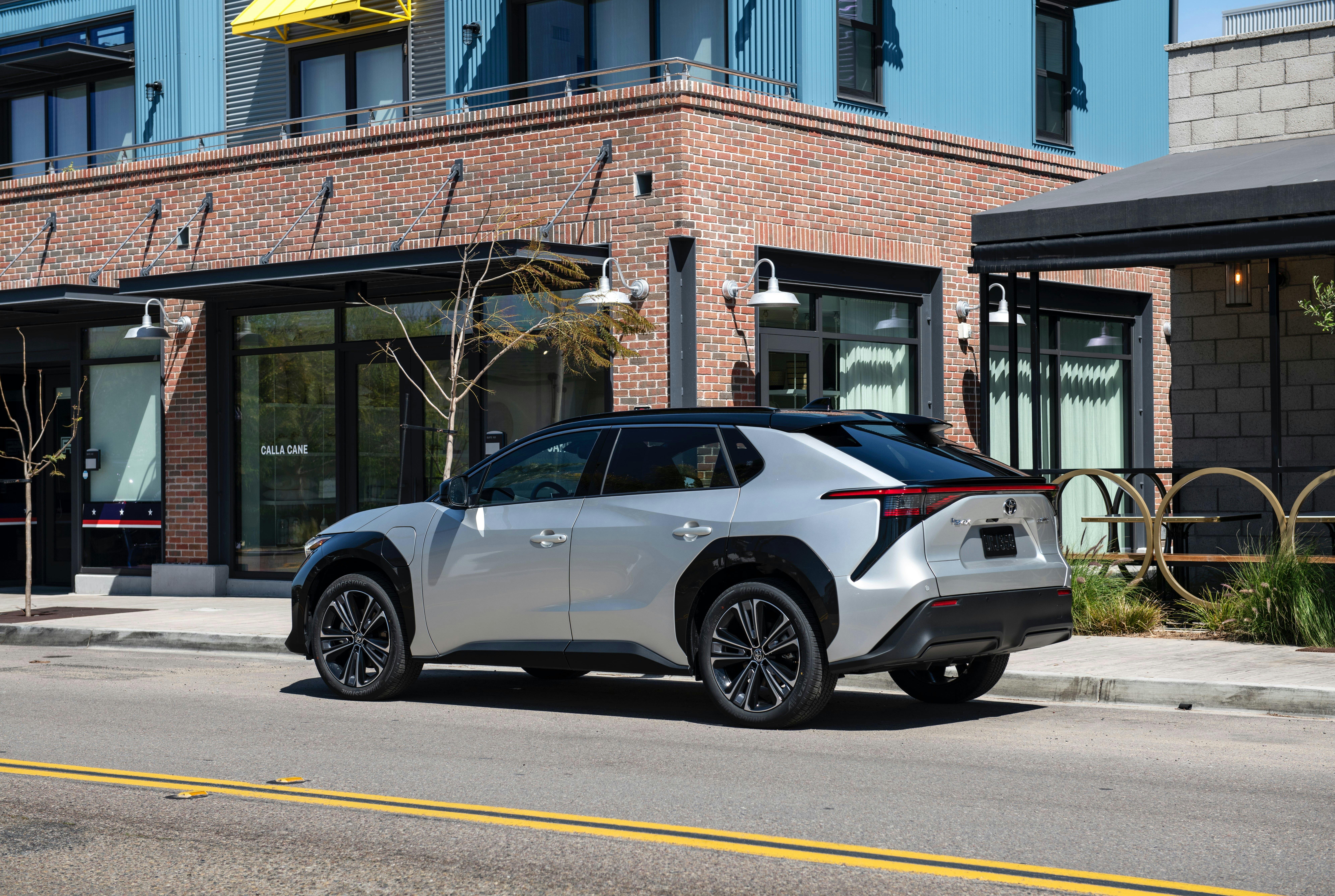
Toyota offers single-motor front-wheel and dual-motor all-wheel-drive setups, though both offer just over 200 horsepower. Unlike most other EVs, AWD doesn't give you much more performance — FWD has 201 horsepower and 196 lb-ft, while AWD goes to 214 HP and 248 torque. The FWD does offer a longer range at 252 miles in XLE trim, while the AWD sports just 228 miles in XLE, or around 10 percent less for the extra motor. The pricier Limited trim has a slightly lower range.
Even with the modest performance numbers, the car performs well thanks to the electric motors and low center of gravity. 0 to 60 mph happens in 6.5 seconds (AWD) or 7.1 seconds (FWD), far from sports car territory, but a Toyota Prius takes just under 11 seconds.
If you've driven any sort of Toyota recently, it feels just like that: solidly built, with excellent steering feel, and basically it's an electric Toyota. Nothing fancy.
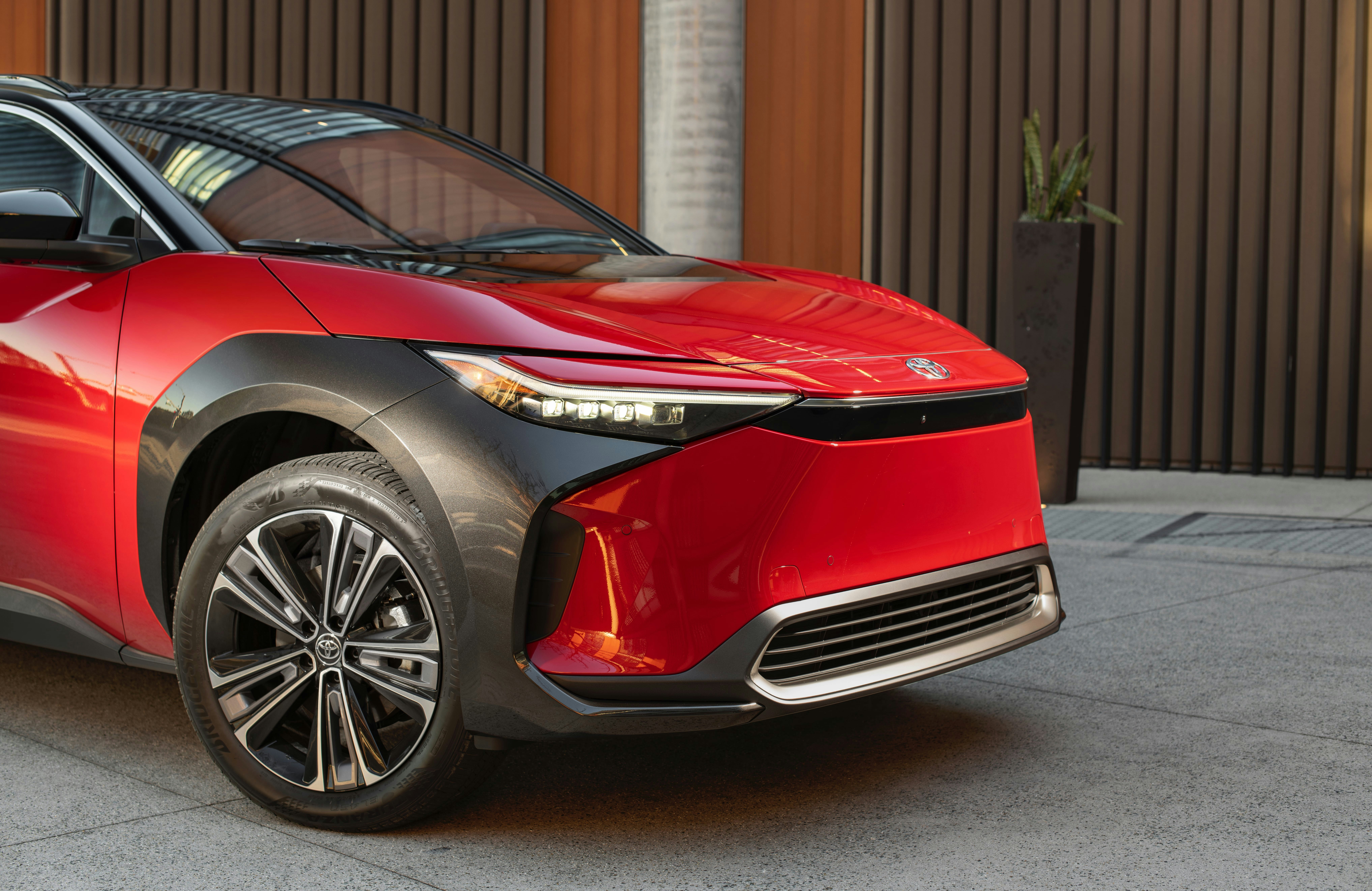
On the outside, there are all kinds of interesting geometric shapes and black body panels around the wheels. Imagine if a RAV4 and a Subaru Outback had a weird, electric baby. It's not a bad shape, but I like it more in person than I do in photographs. Some folks will dislike it, though, so I'd try to see one before you buy it.
The headlights and taillights are rather lovely, with elegant lines. Toyota says it has a "distinct" style, which is a nice way to put it.
Though Toyota has a reputation as a traditional, boring, conservative company, the interesting design choices continue on the inside. If you've ever driven a Prius, which has a center-mounted dash cluster, you know Toyota isn't a stranger to odd interior setups.
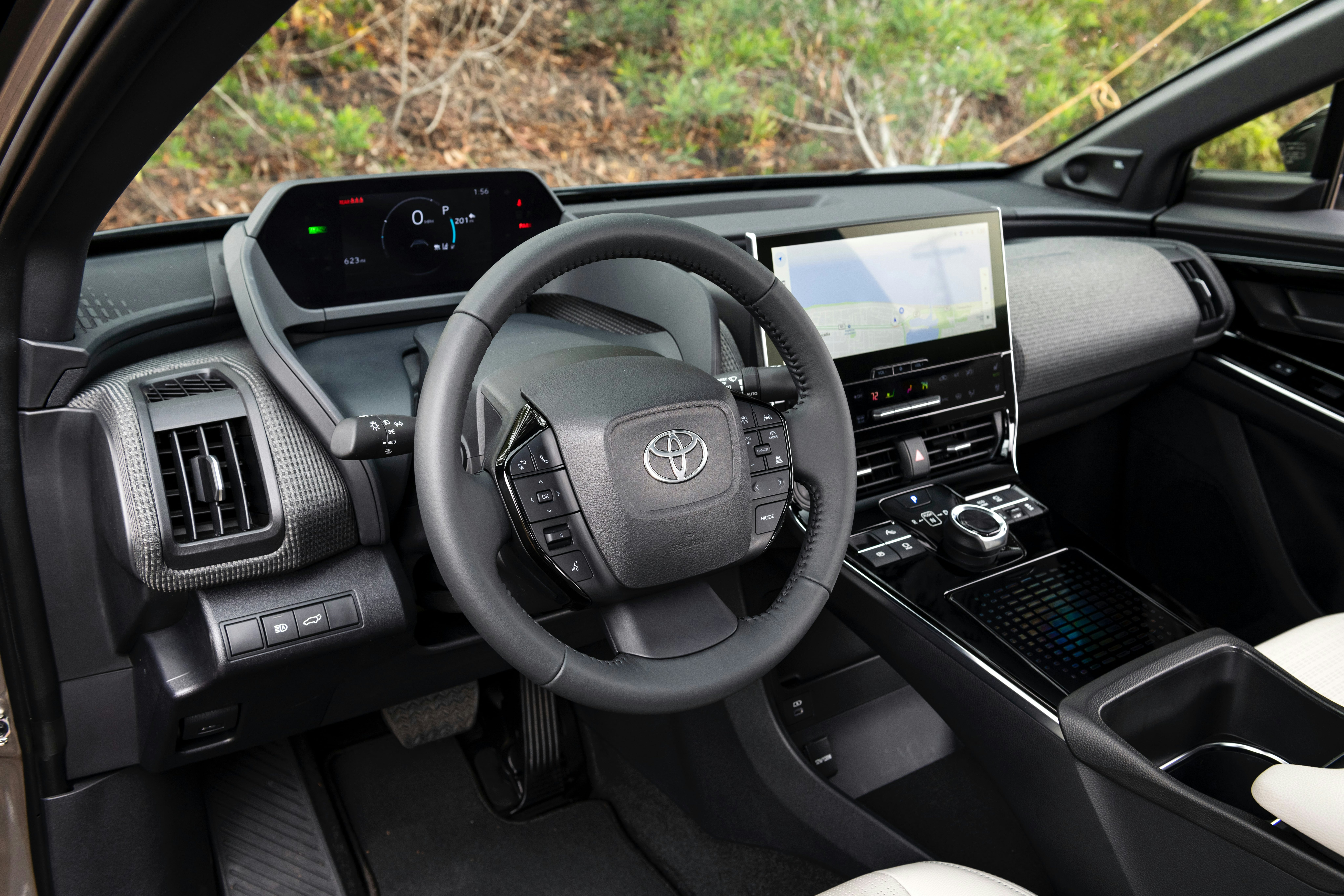
The dash cluster is located relatively far from the driver, and the steering wheel is situated slightly oddly, like it should be a bit higher. But it makes more sense when you realize that the Japanese version of the bZ4X uses an aircraft-style yoke steering wheel (you might have seen something similar in the Tesla Model S Plaid) that removes the top half of the wheel to make the cluster more visible.
The yoke is an aircraft-style steer-by-wire, meaning there's no direct connection between the wheel and the front tires, but we're not getting steer-by-wire or the yoke in the US.
The center stack is a bit more traditional, with a large center touchscreen featuring Toyota's newest infotainment platform that debuted in the new Tundra. The platform has received mixed reviews, but it has wireless Apple CarPlay and Android Auto, so use that.
Annoyingly, the bZ4X doesn't have knobs for volume or temperature control. More annoyingly, everything is covered in fingerprint-attracting gloss black plastic. Less annoyingly, storage is excellent. The center console is a bit of a bridge, with ample storage space underneath for a handbag or similar.
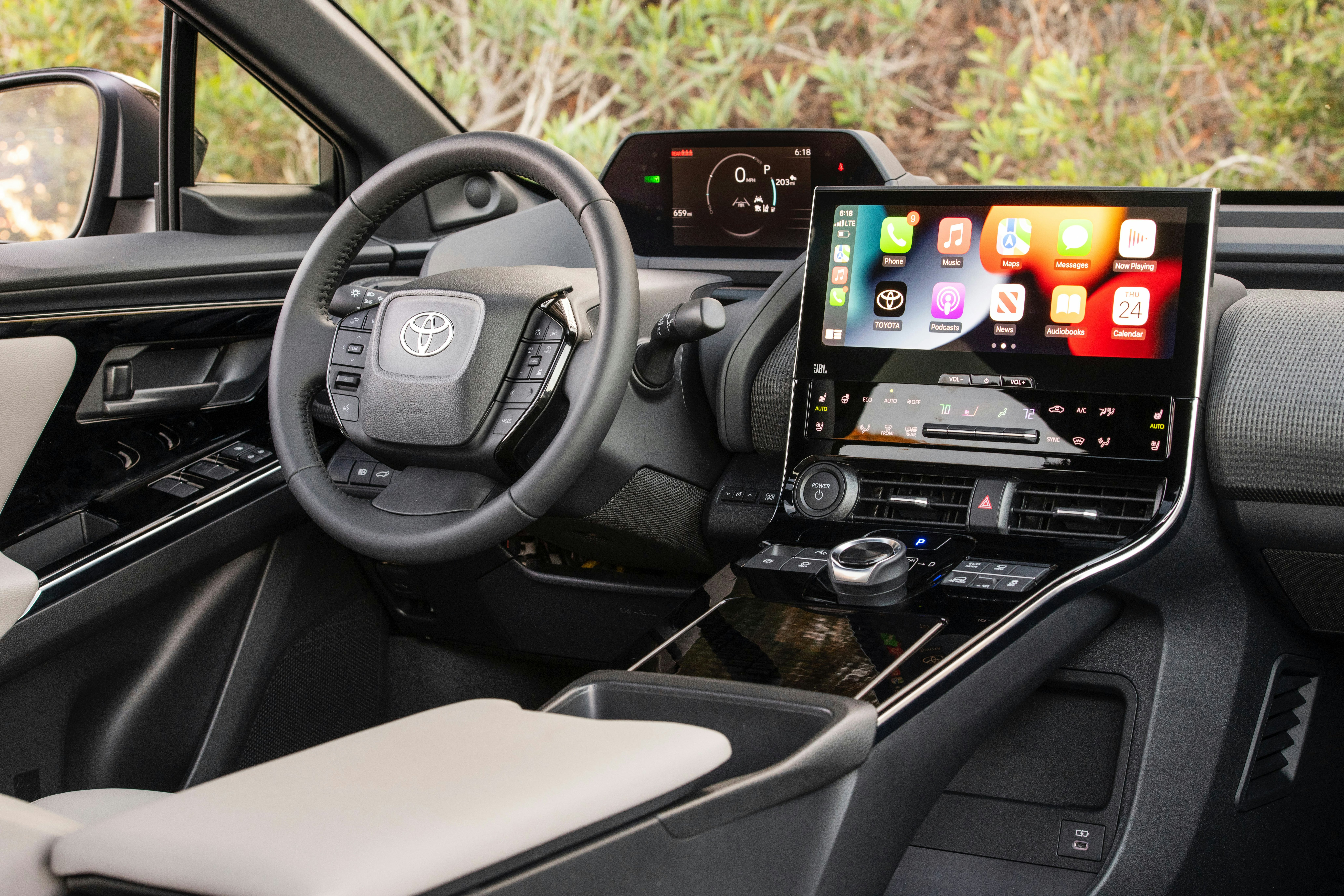
On top of the center console are the shift knob and some drive controls, but behind that is a clever little compartment to store your phone. Pop up the transparent plastic door, and a wireless phone charger is hidden inside. The door is to discourage texting while driving, and since the bZ4X has wireless Apple CarPlay and Android Auto, you can leave your phone there without much trouble.
Curiously, the dashboard is covered in cloth, as are the seats. The whole interior feels a bit different — but the overall effect is lovely. An enormous panoramic sunroof is standard, but, weirdly, a structural brace runs across the middle, interrupting the effect.
The bZ4X is a bit cheaper than the competition, but not by a ton. The base model XLE FWD starts at $43,215, but it is eligible for an up to $7,500 federal tax credit. The top-end Limited AWD is $49,995, in the same ballpark as the Hyundai Ioniq 5, Kia EV6, Ford Mustang Mach-E, and the Volkswagen ID.4.
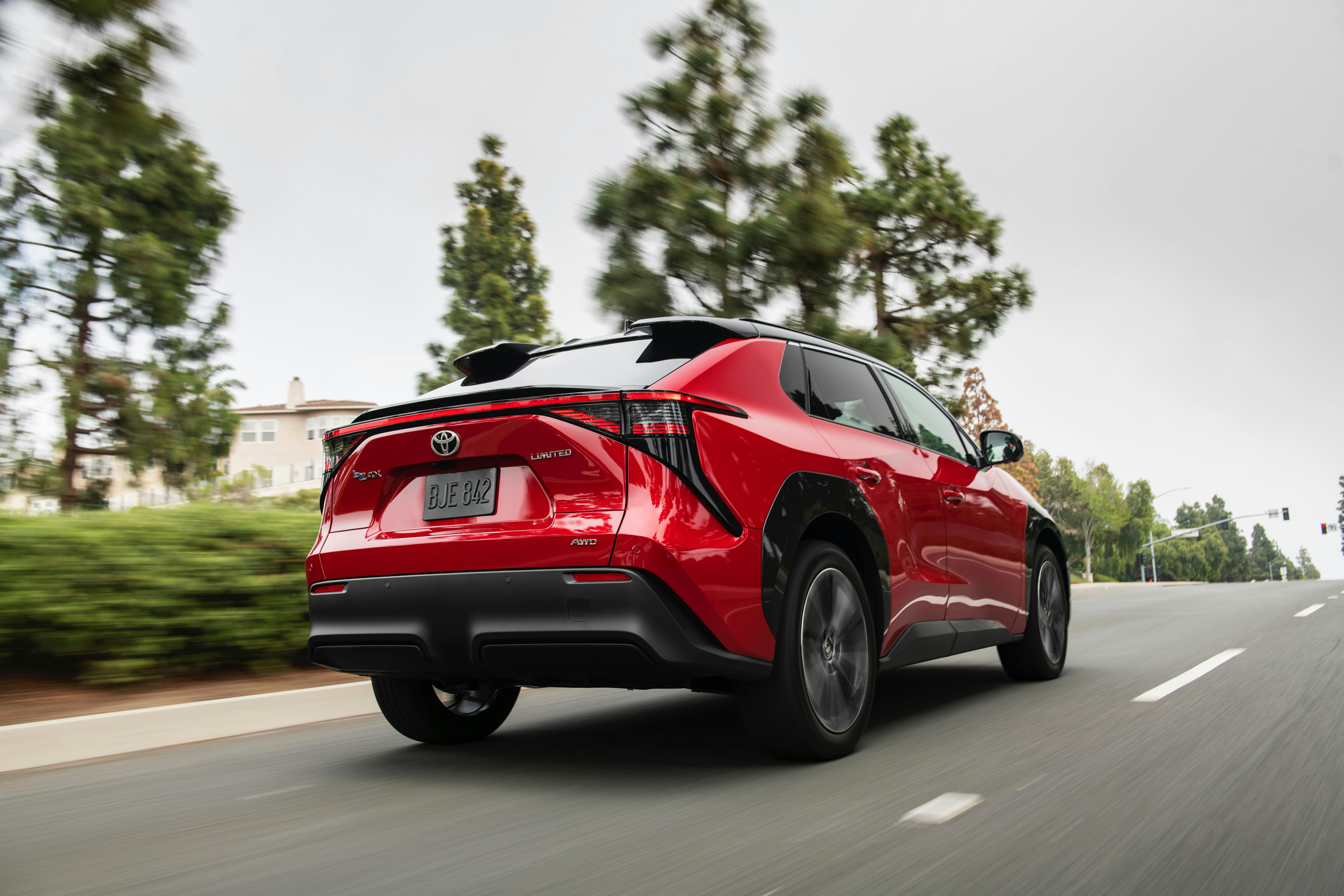
But, it also has a shorter range and isn't quite as luxurious as the competition, so I'm not sure how popular it will be. Neither is Toyota, which plans to import only 7,000 bZ4X cars to the US — that's less than 0.4 percent of Toyota's total US volume from 2021.
Still, the bZ4X shows that Toyota is aware that electric cars exist, and this is just the first of many EVs to come — all with, apparently, incomprehensible names.
One Cool Detail: Phone Storage
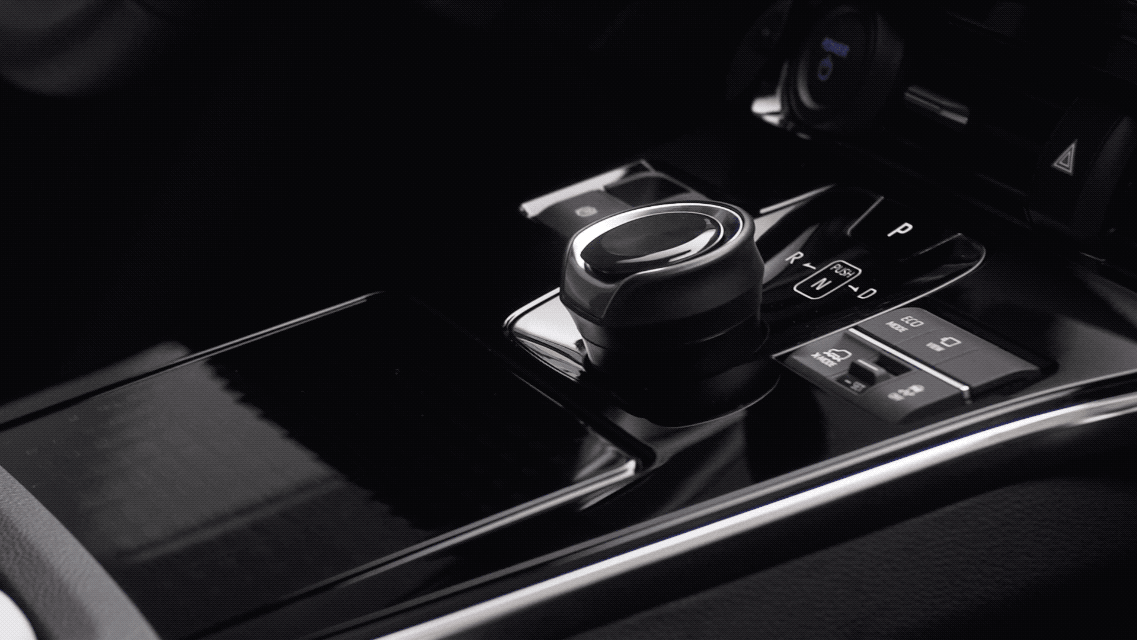
The center console of the bZ4X hides a compartment for your phone. Under a transparent lid is a wireless phone charger that keeps your phone safely out of reach (to discourage texting and driving), but still visible for notifications that come through.
The bZ4X also has wireless Apple CarPlay and Android Auto, so you don’t give up any connectivity goodies by using the storage. My iPhone 12 Pro Max fits, but who knows if the iPhone 19 SuperMax Ultra will. Still, it’s a clever place for your phone which is often impossible to find in modern cars.
Stay on top of the automotive revolution and sign up for Jordan Golson’s free car reviews newsletter. This review is also published in the North State Journal.
Toyota covered the lodging to review the Toyota bZ4X on location, as is common practice in the auto industry. Automakers or their affiliates have no oversight when it comes to Inverse editorial content, which remains wholly independent and from the brain of our extremely opinionated car analyst and critic, Jordan Golson.







